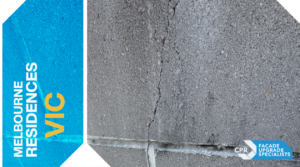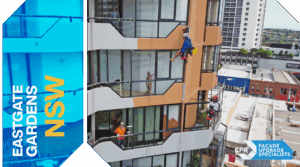Every coastal property deserves a robust, rust‑free future.
Facade Rust Treatment Options for Australian Coastal Buildings are a critical focus for asset owners from Darwin to Devonport. Coastal building maintenance demands specialised methods that address salt air rust damage within the first 100 words. Whether you manage a high‑rise hotel in Surfers Paradise, a heritage wharf warehouse in Fremantle or strata apartments on Sydney Harbour, this guide unpacks best‑practice facade rust treatment approaches, corrosion control Australia standards and protective coatings for facades that keep occupants safe and stakeholders satisfied.
Why Rust Attacks Coastal Facades Faster—and What’s at Stake
Sea spray is rich in chlorides that act as electrolytes, accelerating galvanic reactions that drive metal facade corrosion. When airborne salts mingle with coastal humidity, steel reinforcement within concrete begins to corrode, expanding up to six times its original volume. The result? Cracking, spalling and, ultimately, falling debris—a serious public liability risk. Sydney’s iconic Bondi Pavilion famously underwent an $38 million restoration after chloride‑induced corrosion caused extensive damage.
Failing to address rust early increases repair costs by an average 300 % over a ten‑year period. For strata committees, that means special levies; for government assets, ballooning maintenance budgets; for commercial landlords, vacancy and reputational harm. Proactive rust prevention for buildings therefore underpins sustainable lifecycle planning, asset resale value and public safety.
Key Australian Standards and Compliance Drivers
Rust remediation isn’t just good practice—it’s the law. Relevant standards include:
- AS 2312.1: Guide to protection of structural steel against atmospheric corrosion.
- AS 3735: Concrete structures for retaining liquids.
- AS/NZS 5131: Structural steelwork fabrication and erection.
- State Work Health & Safety Regulations requiring owners to manage foreseeable facade risks.
Meeting these benchmarks often demands professional assessment. Through our SFS360® digital scoping tool and Scaffold‑free™ rope access platforms, CPR conducts compliant facade corrosion solutions without obstructing footpaths or defacing heritage fabric.
Diagnosing the Source: Inspection & Testing Protocols
A rigorous coastal building corrosion investigation starts with:
- Visual Survey—Upseiling® rope technicians inspect joints, fixings and shading devices for rust streaking.
- Hammer Tap & Covermeter Survey—Detects delaminated concrete and rebar cover depth.
- Half‑Cell Potential Mapping—Maps corrosion likelihood in microvolts.
- Chloride Ion Sampling—Lab tests determine salt concentration against 0.4 % mass of cement threshold.
- Coating Adhesion Pull‑Off Tests—Verifies existing paint or protective coating bond strength.
Data is logged into our SE2EPC® system for transparent client review. Armed with evidence, we craft a targeted anti‑rust treatment buildings plan.
Treatment Option 1: Rust Converters & Primers—Rapid Arrest for Localised Outbreaks
When corrosion is superficial and isolated, a three‑coat rust‑converter system may suffice:
| Step | Product Type | Purpose |
| Surface Prep | Abrasive wheel or 60 MPa water blast | Remove loose scale |
| Conversion Coat | Tannic acid–based liquid | Chemically stabilises iron oxide |
| High‑Build Epoxy Primer | 125 µm DFT | Seals pores, enhances adhesion |
| Polyurethane Topcoat | 60 µm DFT | UV‑resistant, colour‑stable protection |
This exterior rust repair Australia method costs as little as AUD 85 per square metre and can be installed via PEARS® rope hoists—avoiding scaffold rental fees.
Pros
- Fast turnaround (one‑week curing)
- Minimal disruption to tenants
- Compatible with most cladding profiles
Cons
- Limited to spot corrosion under 25 µm pit depth
- Requires repainting every 7–10 years in C5 coastal zones
Treatment Option 2: Cathodic Protection—Long‑Term Defence for Reinforced Concrete
For chloride‑contaminated concrete, cathodic protection (CP) offers decades of building facade protection. Two main types are used in Australia:
- Impressed Current CP (ICCP)—Titanium mesh anodes fixed to the concrete surface, connected to a DC power unit.
- Galvanic CP—Zinc or aluminium sacrificial anodes embedded in repair patches.
Our engineers calculate current density to AS 2832 and install monitoring reference electrodes. When paired with protective coatings for facades, CP extends service life by 30 years and halves maintenance call‑outs.
Pros
- Proven lifespan (20–50 years)
- Low visual impact if mesh is over‑rendered
- Monitored performance via remote telemetry
Cons
- Higher capex (AUD 220–400 per m²)
- Requires specialist design and periodic tuning
Treatment Option 3: Stainless‑Steel Replacement—Future‑Proofing Exposed Fixings
Balustrades, sunshades and signage often rust first because they’re made of mild steel bolted through facade panels. Replacing corroded items with rust‑resistant building materials such as grade 316 stainless or marine‑grade aluminium eliminates ongoing painting cycles.
CPR’s MARS™ access routes allow trades to detach old fixings and install new bracketry during night shifts—perfect for commercial towers where daytime access is restricted.
Upgrade Checklist
- ► Specify passivated 316 or duplex 2205 stainless for seawater exposure
- ► Use ISO 9227 compliant fasteners
- ► Apply dielectric grease to reduce bimetallic corrosion at interfaces
Treatment Option 4: High‑Performance Protective Coatings—Barrier & Breather Systems
Paint technology has evolved dramatically, offering rust treatment Australian buildings solutions tailored to substrate and aesthetic requirements.
1. Elastomeric Acrylic Coatings
- Features: Waterproof yet vapour‑permeable, bridges hairline cracks up to 0.6 mm.
- Best For: Heritage masonry requiring breathability.
- Example System: Parchem Emer‑Clad 200 µm DFT + low‑sheen finish.
2. High‑Solid Epoxy Mastic + Polyaspartic Urethane
- Features: 98 % volume solids, chemical‑resistant, rapid cure at 10 °C.
- Best For: Industrial facades in steel portal‑frame warehouses.
3. Fluoropolymer FEVE Topcoats
- Features: 60‑year colour retention, chalking <1 ΔE after 20 years QUV.
- Best For: Landmark commercial towers seeking reduced repaint cycles.
View product pathways here: Rust Coating Solutions
Treatment Option 5: Design Modifications—Breaking the Corrosion Chain
Some rust problems stem from water ponding or crevice traps. Minor design tweaks can offer major gains:
- Drip Edges & Flashings—Add 20 mm kicks to shading devices to shed saltwater.
- Ventilated Rainscreens—Create a 40 mm cavity for air flow behind metal panels.
- Slope Adjustments—Re‑grade sills to 10 ° fall preventing standing water.
Because these changes often occur at height, our Scaffold‑free™ methodology reduces risk and cost vs. traditional scaffold.
Treatment Option 6: Hydrophobic Impregnations—Invisible Shield for Concrete & Masonry
Silane‑siloxane impregnants penetrate up to 10 mm, line pore walls and reduce water uptake by 90 %. They do not form a film, retaining vapour permeability—ideal for heritage bluestone piers subject to salt spray.
- Application: Low‑pressure spray via Upseiling® technician.
- Recoat Interval: 10–12 years (Zone 4 exposure).
- Synergy: Combine with galvanic anodes at cracks for holistic defence.
Treatment Option 7: Ongoing AfterCare™—Monitoring & Maintenance
Rust never sleeps—so neither should your maintenance regime. CPR’s AfterCare™ program delivers:
- Annual coastal weatherproofing solutions audits using drone thermography.
- Chloride probe readings uploaded to SFS360® dashboard.
- Touch‑up painting of localised holiday patches.
Clients report 45 % fewer emergency call‑outs and a 25 % extension of repaint cycles compared to reactive plans.
Comparative Cost & Lifecycle Matrix
| Treatment | Capex (AUD/m²) | Lifespan (years) | Recommended Asset Type |
| Rust Converter + Primer | 85–120 | 7–10 | Low‑rise strata balconies |
| Cathodic Protection | 220–400 | 20–50 | Reinforced concrete podiums |
| Stainless Replacements | 180–350 | 30+ | Balustrades, sunshades |
| Elastomeric Acrylic | 55–80 | 12–15 | Heritage masonry |
| FEVE Fluoropolymer | 140–200 | 25–35 | Commercial high‑rise cladding |
(Costs exclude GST; based on 2025 Q2 tender data across eastern seaboard.)
How CPR Delivers Rust‑Free Results—Fast
Unlike conventional contractors that rely on scaffold and generic coating specs, CPR integrates proprietary tech with specialist knowledge:
- Scaffold‑free™ vertical access slashes preliminaries by up to 35 % and avoids drilling anchor holes in corroded steel.
- MARS™ rope layouts ensure multiple rescue routes, satisfying ISO 22846 and WorkSafe guidelines.
- PEARS® positioning grants 360 ° wrap access to complicated fins.
- SkyPod® encapsulation contains rust flakes, protecting pedestrians and meeting EPA dust‑control regulations.
- ASP’S™ Accreditation guarantees all applicators are NACE or ACA‐certified.
- SE2EPC® cloud QA logs DFT readings, chloride levels, cure times, humidity and captures before/after images for audit trails.
No other Australian remedial team combines difficult‑access expertise with corrosion engineering like CPR.
Industries We Serve
- Commercial—CBD office towers, hotels
- Strata—Coastal apartment blocks battling sea mist
- Government—Ports, defence bases, marine wharves
- Heritage—Art Deco bathhouses, industrial piers
- Industrial—Petrochemical sheds, desalination plants
Frequently Asked Questions
How soon should I inspect a new coastal facade?
Within 12 months of completion, then every two years—chlorides can breach cover rapidly.
Can rusted fixings be cleaned and re‑galvanised in situ?
Hot‑dip galvanising requires factory immersion; it’s usually cheaper to swap to stainless.
Does cathodic protection interfere with building electrics?
No—the DC current is very low (0.02–0.05 mA per m²) and isolated from mains supply.
Next Steps: Restore, Protect, Relax
Don’t let salt air write the next chapter in your maintenance log. Book a Rust Remediation & Protective Coatings Consultation. Our corrosion engineers will design a bespoke rust‑free strategy—so your facade stays pristine and your bottom line stays protected.






